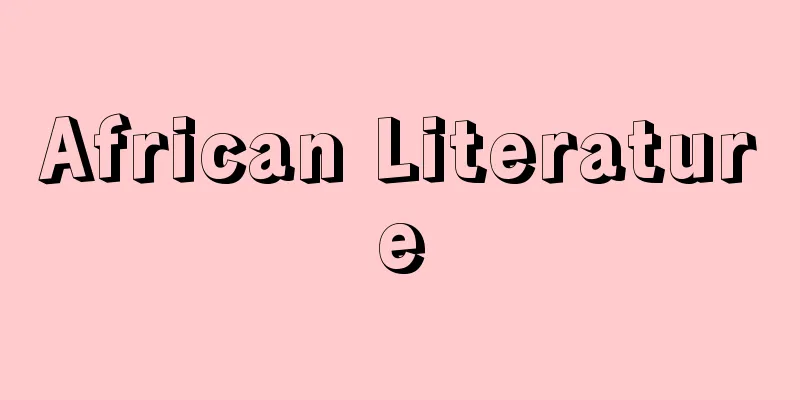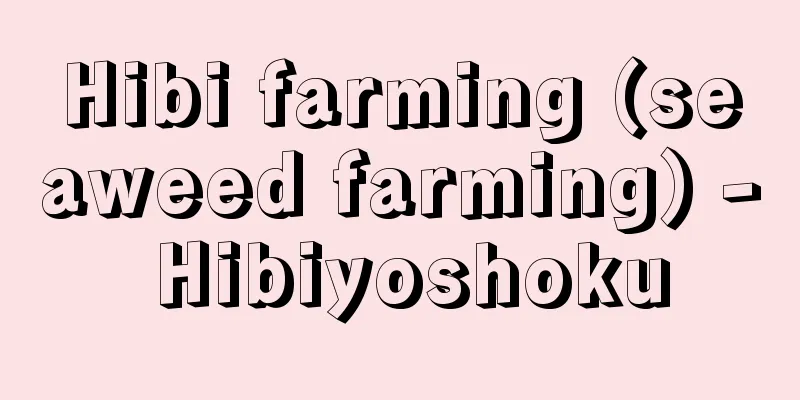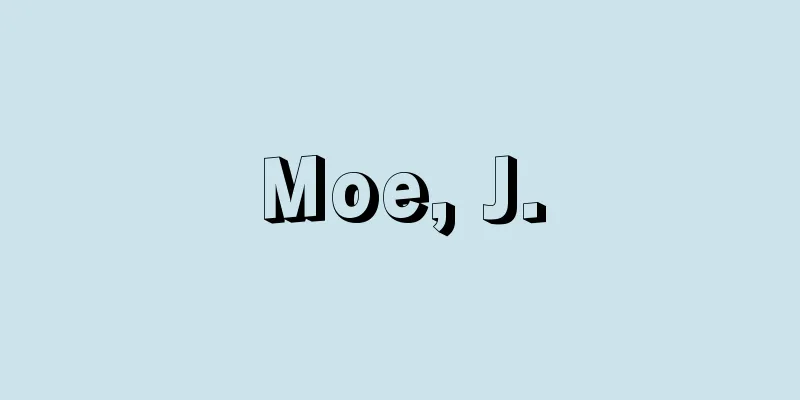African Literature

|
African literature can be divided into non-literal literature and written literature. Non-literal literature refers to oral literature such as myths, folk tales, and heroic epics that have been transmitted orally since ancient times. In recent years, as the stagnation of modern European civilization has become apparent, there has been a movement in Africa, especially since 1975, to excavate and build an African value system from the world of non-literal literature that should become the pillar of a new 21st century civilization to replace it. Works that have turned oral literature into texts, such as M. Kunene's "Shaka the Great," A.K. Armah's "The Healers," Clark Bekederemo's "Ogidi Saga," and C. Raye's "Guardians of the Word," are part of this movement. On the other hand, written literature is divided into two parts: the Arab cultural sphere, which is strongly influenced by Islam, such as Swahili literature, Bantu literature, and Hausa literature, and the Christian cultural sphere of the coastal region of West Africa and the Christian cultural sphere of Southern and East Africa in Southern and East Africa. And when we talk about contemporary African literature, the mainstream refers to literature from Christian countries. [Tetsu Tsuchiya] Historical divisions of African literatureContemporary African literature can be broadly divided into English-speaking, French-speaking, and Portuguese-speaking, based on the language of the former colonial power, and there is also the literature of the Republic of South Africa, which has developed a unique literature reflecting its multi-racial society. African literature can be divided historically into four periods, as shown below, but since the 1980s, younger, new literary pioneers have appeared, which can also be considered a fifth period. [Tetsu Tsuchiya] 1st PeriodThe first period of literature was Christian missionary literature, which developed in response to the colonization of the country by Western countries that began in the mid-19th century. At the pinnacle of this period were the works of Thomas Mofolo (1876-1948), who wrote King Chaka (1925), and Daniel Olorunfemi Fagunwa (1903-1963), who wrote The Forest of a Thousand Spirits (1938). In addition to the long-standing Amharic literature, other African language literatures that developed around this time included Xhosa, Sotho (e.g., Mofolo), Zulu (e.g., Jordan Khush Ngubane (1917-1985) and R.R.R. Dhlomo (1901-1971)), and Tswana (e.g., Solomon T. Plaatje (1876-1932)). [Tetsu Tsuchiya] Second PeriodThe second period was the literature that was based on the Négritude (blackness) movement that arose in Paris in the 1930s, centered around Césaire and Senghor, and which rejected assimilation. Its main stage was in French-speaking countries, and later spread to Portuguese-speaking countries as well. However, as independence came within reach in the 1950s, Négritude itself lost its former vivid vitality, and French-speaking literature also stagnated. Negritude poets include David Diop, Birago Diop (1906-1989), Tchicaya U Tam'si (1931-1988), Jacques Rabémanajara (1913-2005), and, in the Portuguese-speaking world, Francisco José Tenreiro (1921-1963), Oscar Ribas (1909-1990), Agostinho Neto (1922-1979), and Mário Andrade. French-speaking novelists include Cheiku Kane (1928- ), who explored the essence of blackness, and Ferdinand Léopold Oyono (1929-2010), who comically exposed the hypocrisy of white people, as well as Bernard Binlin Dadié (1916-2019) and Yambo Ouologuem (1940-2017). However, the one who has attracted attention for resisting authority and always providing topics of conversation, and who is also popular among young people, is the rebellious writer Ousmane Sembène, who is also known as a film director. [Tetsu Tsuchiya] Third PeriodIn the third period, after the 1960s, the main focus of literature shifted to the English-speaking world. Here, novels were the focus, and can be broadly divided into three styles: those that used myths and folklore, such as Daniel Fagunwa and Tutuola; those that tragically depicted the clash between the new Western civilization and the old tribalism during the modernization process, such as Achebe and the early Ngugi (Ngugi); and those that depicted the decadence of modernized cities, such as Equensi, and those that sharply satirized the absurdity of post-independence African societies, where traditional and modern cultures coexist, such as Soyinka. Other novelists in this field include Timothy Mofolorunso Aluko (1918-2010), Elechi Amadi (1934-2016), and Gabriel Okara (1921-2019), and poets include Taban Lo Liyong (1939- ), Clark Bekederemo, Kofi Awonor (1935-2013), and Okigbo. [Tetsu Tsuchiya] 4th PeriodEntering the 1970s, the fourth period, the activities of writers born after 1940 became prominent. They were critical of the first generation of writers of the third period, such as Soyinka, for turning a blind eye to the evils of real society and escaping into the world of "the past" and "myth." These writers include Nigeria's Omotosho, Bode Sowande (1948-), Isidore Okpewho (1941-2016), Festus Iyayi (1947-2013), Femi Osofisan (1946-), Okaye of Ghana, and Nuruddin Farah (1945-) of Somalia. They are realists who confront the corrosive structure of real society under the banner of social justice and demand social change. In the case of Kenya, Mwangi, Samuel Kahiga (1946-), and Ngugi, whose creed as a writer is to confront neo-colonialism, also fall into this category. In addition, the theater movement of Ngugi and Showande that is deeply rooted in the real lives of the people, the growing enthusiasm for haiku among Senegalese, and the fact that Omotosho and Ngugi began writing novels in Yoruba and Gikuyu (Kikuyu) respectively, are attracting attention as movements that promote a revolution in the consciousness of the people in conjunction with Steve Biko's Black Consciousness Movement. On the other hand, there was a steady growth in women's literature critical of patriarchal society, such as that by Efua Sutherland (1942-1996), Grace Ogot (1930-2015), Head, Ama Ata Aidoo (1942- ), Micere Mugo (1942- ), Buchi Emecheta (1944-2017), and Mariama Ba. In addition, this period also saw the development of remarkable popular (entertainment) literature, with the likes of Nigeria's Ken Saro-Wiwa (1941-1995), Kenya's David Mailu (1939- ), Mwangi Ruheni (1934- ), and Charles Mangua (1942- ). [Tetsu Tsuchiya] Fifth Period (1980s and after)In the 1980s, which could be called the fifth period, even younger writers born after the end of World War II made a spectacular appearance as the bearers of a new literature. At that time, Palestinian E. W. Said published Orientalism (1978), which clearly presented a stance that rejected the egocentric intellectual apparatus centered on European modernity, rebelling against the white-dominated Eurocentrism and Patriarchy that had been inherited by whites since 1500 and had simultaneously dominated the world. Stimulated by this, young writers in the 1980s began to clearly depict in their works the position of "looking at Africa from an African-centered worldview, rather than a Euro-centered one." They attempt to draw on this African-centered worldview from the rich world of oral literature that is unique to Africa, or from the casual everyday conversations of ordinary people in the marketplace. Such writers include Ghana's Kofi Anyidoho (1947-), Nigeria's T. Ojaide (1948-), N. Osundare (1947-), B. Okri (1959-), O. Ofeimun (1950-), female writers T. Onwueme (1955-), Z. Alkali (1950-), and Kenya's Francis Davis Imbuga (1947-2012). Among the older generation, Achebe made it clear that he took this position, and from Zimbabwe, which gained independence in 1980, many similar writers have appeared, including C. Mungoshi (1947-), M.B. Zimunya (1949-), Chenjerai Hove (1956-2015), D. Marechera (1952-1987), S. Chinodya (1957-), and T. Dangarembga (1959-). It is also noteworthy that the literary scene in southern Africa was particularly vibrant during this period, with Malawian poets J. Mapanje (1944-) and F.M. Chipasula (1949-) risking their lives to protest against the oppressive regime of the Banda regime. I would also like to add that this diversity indicates the depth of the term, which cannot be lumped together as "postcolonial." [Tetsu Tsuchiya] South African literatureSouth African literature dates back to ancient times, when Stephen Black (1880-1931) and J.P. Fitzpatrik (1862-1931) wrote works depicting the human relationships in South Africa in the good old days for white people. However, the mainstream was white literature, which focused on sexual discrimination between men and women, interracial sex, and mixed marriages. The founding author was Olive Schreiner (1855-1920) with her book "African Plantation Story" (1883), and many other writers, including William Plumer, Alan Paton, Nadine Gordimer, J.M. Coetzee, Laurens Van der Post (1906-1997), Dan Jacobson, and others. The works of Jacobson (1929-2014) and Doris Lessing, whose works are set in Rhodesia, depict the reality of racial discrimination and the mutual fear and hatred it brings, while pursuing the possibility of reconciliation. Another playwright is Fugard, who realistically stages the absurdity of discrimination. On the other hand, Afrikaners (white Dutch people) have produced excellent poetry in Afrikaans that is rooted in Calvinism, which reveres nature and yearns for the kingdom of God. Among them, J. D. Totius (1877-1953) and NP Wyk Louw (1906-1970) are outstanding. Bosman also wrote novels in English based on fireside tales filled with the hardships of pioneers in the new world, and has been called the "Mark Twain of South Africa." On the other hand, Afrikaner writers who write works in Afrikaans that expose racism, such as the poet Breytenbach and the writer André Brink (1935-2015), have begun to appear and are attracting attention. Non-white and black literature has always been literature of resistance against apartheid (racial discrimination), but it changed significantly between generations after the Sharpeville incident in 1960 and the subsequent declaration of the State of Emergency. In other words, compared to Mpashere and Abrahams, who were representative of the 1940s and 1950s, La Guma, Reeve, Kunene, Lewis Nkosi (1936-2010), James Matthews (1929-), and N. Ndebele (1948-), who were active from the 1960s onwards, put an end to traditional non-violent struggles and expressed naked hostility towards apartheid in their works. As a result, all of their works were banned, and eventually the "age of poetry" represented by Oswald Mtshali and Mongane Serote (1944-) arrived in the 1970s. Poetic language allows one to abstract and symbolize reality, and to evade censorship laws. The 1976 Soweto uprising in particular greatly transformed South African poetry, and many excellent poems were written by poets, including Sipho Sepamla (1932-2007), dedicated to the innocent schoolchildren who were killed in Soweto. Incidentally, apartheid laws were abolished in 1991, and the Mandela black government, which aimed for ethnic reconciliation, was established in 1994. The question now is how to rebuild the "rainbow nation" of South Africa, which has been devastated by a long history of racial conflict, and turn it into a paradise. What can literature do to achieve this? This is a question that has been squarely asked of black writers such as Serote, who is the backbone of the African National Congress (ANC) Cultural Affairs Department, Mbulelo Vizikhungo Mzamane (1948-2014), M. Maponya (1951- ), and Z. Muda (1948- ), as well as white writers such as C. Hope (1944- ) and Achmat Dangor (1948-2020), and the Indian writer Ahmed Essop (1931-2019). Other writers who have visited Japan include Dardier, Senghor, Achebe, Ngugi, La Gouma, Okai, Kunene, Soyinka, as well as white writers such as Plumer, van der Post, and Gordimer. [Tetsu Tsuchiya] "Modernization and Africa" by Tetsuya Tsuchiya (1978, Asahi Shimbun)" ▽ "A Guide to Contemporary African Literature" by Tetsuya Tsuchiya (1994, Shinchosha)" ▽ "Introduction to African Literature" by Fujio Fukushima (1999, Three A Network)" ▽ "Contemporary African Literature" by N. Gordimer, translated by Tetsuya Tsuchiya (Iwanami Shinsho) [References] | | | | | | | | | | | | | | | | | | | | | | | | | | | | | | | | |Mpashere| | | | |Source: Shogakukan Encyclopedia Nipponica About Encyclopedia Nipponica Information | Legend |
|
アフリカ文学には非文字文学と文字文学がある。非文字文学とは、神話、民話、英雄叙事詩など、古くから口誦(こうしょう)で伝達されてきた口承文芸のことである。ヨーロッパ近代文明の行き詰まりが顕在化してきた昨今では、これにかわる新しい21世紀の文明の柱となるべきアフリカ的価値体系を、この非文字文学の世界から発掘構築しようとする動きが、とくに1975年以降のアフリカで活発になってきている。M・クネーネの『偉大なる帝王シャカ』、A・K・アーマーの『治療師(ヒーラー)たち』、クラーク・ベケデレモの『オジディ・サガ』、C・ライェの『言葉の守護者』などの、口承文芸を文字化した作品がその一環である。一方、文字文学は、スワヒリ文学、バントゥー文学、ハウサ文学など、イスラム教の影響の強いアラブ文化圏と、西アフリカ沿岸地域および南部アフリカと東アフリカのキリスト教文化圏に二分される。そして現代アフリカ文学という場合、その主流はキリスト教圏文学をさす。 [土屋 哲] アフリカ文学の歴史区分さて現代アフリカ文学は、旧宗主国の言語により英語圏、フランス語圏、ポルトガル語圏に大別され、このほかに、多人種社会を反映して異質な文学を発達させている南アフリカ共和国の文学がある。アフリカ文学を歴史的に区分すると、次のように4期に分けられるが、1980年代以降はさらに若手の新しい文学の担い手が登場しており、これを第5期とみることもできる。 [土屋 哲] 第1期第1期の文学は、西欧諸国による植民地化が19世紀中葉から始まるにつれて、それと呼応するかたちで発達したキリスト教伝道文学である。そしてその頂点に『チャカ王』(1925)を書いたトマス・モフォロThomas Mofolo(1876―1948)と『千の精霊の生息する森林』(1938)を書いたD・O・ファグンワDaniel Olorunfemi Fagunwa(1903―1963)が位置する。ほかに、古くからあったアムハラ文学に加えて、コーサ、ソト(たとえば、モフォロ)、ズールー(たとえば、ジョルダン・クシュ・ングバネ(グバネ)Jordan Khush Ngubane(1917―1985)とR・R・R・ドロモR. R. R. Dhlomo(1901―1971))、ツワナ(たとえば、ソロモン・T・プラーキSolomon T. Plaatje(1876―1932))などのアフリカ語文学もこのころに発達した。 [土屋 哲] 第2期第2期は、セゼール、サンゴールらを中心に、同化拒否を旗印として1930年代にパリで興ったネグリチュード(黒人性)運動を母体とする文学。フランス語圏がその本舞台で、のちにポルトガル語圏にも飛び火していった。だが1950年代に独立が射程距離内に入るにつれて、ネグリチュード自体がかつての鮮烈な活力を失い、フランス語圏文学も停滞する。ネグリチュード派詩人にデイビッド・ディオプ、ビラゴ・ディオプBirago Diop(1906―1989)、チカヤ・ウ・タムシTchicaya U Tam'si(1931―1988)、ジャック・ラベマナジャラJacques Rabémanajara(1913―2005)、ポルトガル語圏ではフランシスコ・ホセ・テンレイロFrancisco José Tenreiro(1921―1963)、オスカル・リバスOscar Ribas(1909―1990)、アゴスティニョ・ネトAgostinho Neto(1922―1979)、マリオ・アンドラーデらがいる。フランス語圏小説家には、黒人性の本質を追究したライェ、チェイク・カネCheiku Kane(1928― )、白人の偽善をコミカルに暴き立てるベティ、フェルディナン・オヨノFerdinand Léopold Oyono(1929―2010)のほかベルナール・ダーディエBernard Binlin Dadié(1916―2019)、ヤンボ・ウオロゲムYambo Ouologuem(1940―2017)がいるが、権力に抵抗しつねに話題を提供して注目され、また若者に人気のあるのが映画監督としても著名な反骨の作家ウスマン・センベーヌである。 [土屋 哲] 第3期第3期、1960年代以降の文学の主役は英語圏に移る。ここでは小説が中心で、ダニエル・ファグンワ、チュツオーラのように神話、民間伝承を素材とする派と、アチェベ、初期のングーギ(グギ)のように近代化の過程での、新しい西欧文明と古い部族主義との激突を悲劇的に描く派(この派はやがて、俗にいうポスト・コロニアル文学の主流を形成するようになる)、エクエンシーのように近代化された都市の退廃を描いたりショインカのように伝統文化と近代文化が同居する独立後のアフリカ社会がもつ不条理性を痛烈に風刺する派の、三つの作風に大別できる。そしてその周辺の小説家にティモシー・モフォロルンショ・アルコTimothy Mofolorunso Aluko(1918―2010)、エレチ・アマディElechi Amadi(1934―2016)、ゲーブリエル・オカラGabriel Okara(1921―2019)、詩人にターバン・ロ・リヨングTaban Lo Liyong(1939― )、クラーク・ベケデレモ、コフィ・アウーノーKofi Awonor(1935―2013)、オキボらがいる。 [土屋 哲] 第4期第4期の1970年代に入ると、たとえばショインカに代表される前記第3期の作家たちを、現実社会の諸悪から目をそらし「過去」と「神話」の世界に逃避しているとして、第3期第一世代の作家たちに批判的な、1940年以降生まれの作家たちの活動が際だってくる。ナイジェリアのオモトショ、ボデ・ショワンデBode Sowande(1948― )、イシドレ・オペウォーIsidore Okpewho(1941―2016)、フェスタス・イヤーイーFestus Iyayi(1947―2013)、フェミ・オショーフィーサンFemi Osofisan(1946― )、ガーナのオカイ、ソマリアのヌルディン・ファラーNuruddin Farah(1945― )らで、彼らは社会正義を旗印に現実社会の腐食の構造と対決し、社会変革を迫るリアリストたちである。ケニアの場合ムワンギ、サミュエル・カヒガSamuel Kahiga(1946― )、それにネオ・コロニアリズム(新植民地主義)との対決を作家信条としているングーギもこの類に入る。またングーギ、ショワンデらの民衆の実生活に深く根を下ろした演劇運動、セネガル人の間での俳句熱の高まり、オモトショ、ングーギがそれぞれヨルバ語、ギクユ(キクユ)語で小説を書き出したことなどは、スティブ・ビコの黒人意識運動と連動するかたちでの、民衆の意識革命を促す動きとして注目を引く。一方、エファ・サザランドEfua Sutherland(1942―1996)、グレイス・オゴトGrace Ogot(1930―2015)、ヘッド、アマ・アタ・アイドウAma Ata Aidoo(1942― )、ミチェレ・ムゴMicere Mugo(1942― )、ブチ・エメチェタBuchi Emecheta(1944―2017)、マリアマ・バーらによる男権至上主義社会に批判的な女性文学も確実に育ってきており、またナイジェリアのケン・サロ・ウィワKen Saro-Wiwa(1941―1995)、ケニアのデイビッド・マイルーDavid Maillu(1939― )、ムワンギ・ルヘーニMwangi Ruheni(1934― )、チャールズ・マングアCharles Mangua(1942― )ら、この時期は大衆(娯楽)文学の発達も目覚ましい。 [土屋 哲] 第5期(1980年代以降)第5期ともいうべき1980年代に入ると、第二次世界大戦終結後に生まれた、さらにひとまわり若い作家たちが新しい文学の担い手として華々しく登場してくる。おりからパレスチナ人のE・W・サイードが、1500年以来連綿として白人が継承し、同時に世界を支配してきた白人優位のユーロセントリズムEurocentrism(ヨーロッパ中心主義)とパトリアキーPatriarchy(家父長主義)に反旗を翻して、ヨーロッパ近代中心の唯我独尊的な知的装置を拒絶する立場を鮮明に打ち出した『オリエンタリズム』(1978)を世に出した。この刺激もあって、1980年代の若い作家たちは、「ヨーロッパ中心の世界観からアフリカをみるのではなくて、アフリカ中心の世界観からアフリカをみる」立場を、その作品のなかで鮮明に描き出すようになった。そして、このアフリカ中心の世界観を彼らは、アフリカに固有の豊潤な口承文芸の世界から、あるいは一般民衆のマーケット(市場)でのさりげない日常会話のなかから、汲(く)み取ろうとするのである。そんな作家にガーナのアニィドーホKofi Anyidoho(1947― )、ナイジェリアのT・オジャイデT. Ojaide(1948― )、N・オシュンダーレN. Osundare(1947― )、B・オクリB. Okri(1959― )、O・オフェイマンO. Ofeimun(1950― )、女性作家T・オンウェメT. Onwueme(1955― )、Z・アルカリZ. Alkali(1950― )、ケニアのイムブガFrancis Davis Imbuga(1947―2012)がいる。古い世代ではアチェベがこの立場にたつことを明言しており、また、1980年に独立したジンバブエからは、C・ムンゴシC. Mungoshi(1947― )、M・B・ズイムニャM. B. Zimunya(1949― )、ホーベChenjerai Hove(1956―2015)、D・マレチェラD. Marechera(1952―1987)、S・チノディヤS. Chinodya(1957― )、T・ダンガレムバーT. Dangarembga(1959― )ら同類の作家が数多く登場するようになった。さらに、バンダ政権の圧政に身を挺(てい)して抗議するマラウィの詩人J・マパンジェJ. Mapanje(1944― )、F・M・チパシュラF. M. Chipasula(1949― )とともに、南部アフリカの文学界がこの時期、とりわけ活況を呈していることも注目していい。そして、この多彩さは、「ポスト・コロニアル」として、一括してくくりきれるものではない、奥行きの深さを示していることも、付言しておきたい。 [土屋 哲] 南アフリカ共和国の文学南アフリカ共和国の文学は、古くは、S・ブラックStephen Black(1880―1931)、J・P・フィッツパトリックJ. P. Fitzpatrik(1862―1931)などの、白人にとって古きよき時代であった南アの人間模様を描いた作品もあるが、主流はやはり男女間の性の差別、異人種間の性交、雑婚を主テーマとする白人系にまず開花し、オリーブ・シュライナーOlive Schreiner(1855―1920)の『アフリカ農園物語』(1883)を始祖として、ウィリアム・プルーマー、アラン・ペイトン、ナディン・ゴーディマ、J・M・クッツェー、ロレンス・ファン・デル・ポストLaurens Van der Post(1906―1997)、ダン・ジェイコブスンDan Jacobson(1929―2014)、ローデシアを舞台としたドリス・レッシングら、人種差別の実態とそれがもたらす人種間の相互恐怖、憎悪を描きながら融和の可能性を追求する文学を展開する。また差別の滑稽(こっけい)さをリアルに舞台で上演する劇作家にフガード(フュガード)がいる。 一方、アフリカーナー(オランダ系白人)たちは、自然を畏怖(いふ)し、神の国にあこがれるカルビニズムに根ざしたアフリカーンス語による優れた詩を生み、なかでもJ・D・トティアスJ. D. Totius(1877―1953)、N・P・ウイク・ロウN. P. Wyk Louw(1906―1970)が傑出している。またボスマンは、新天地開拓民の刻苦に満ちた炉辺小咄(ろへんこばなし)を英語で小説につづり、「南アのマーク・トウェーン」と称せられている。一方、詩人のブレイテンバッハ、作家のアンドレ・ブリンクAndré Brink(1935―2015)などにみられるように、アフリカーナーのなかから、人種差別を内部告発する作品をアフリカーンス語で書く作家が現れるようになり、注目されている。 非白人・黒人系文学は、一貫してアパルトヘイト(人種差別)に抗議する抵抗の文学で、1960年のシャープビル事件、続く非常事態宣言を契機に、世代間で大きく変質する。つまり、1940、1950年代を代表するムパシェーレ、エーブラハムズに比べて1960年代以降に活躍するラ・グーマ、リーブ、クネーネ、ルイス・ンコーシLewis Nkosi(1936―2010)、ジェイムズ・マシューズJames Matthews(1929― )、N・ンデベレN. Ndebele(1948― )らは、在来の非暴力闘争に終止符を打ち、アパルトヘイトに対してむき出しの敵意を作品に表現する。そのために作品はすべて発禁処分を受け、やがて1970年代にはオズワルド・ムチャーリ、モンガネ・セローテMongane Serote(1944― )に代表される「詩の時代」が訪れる。詩語だと、現実を抽象・象徴化でき、検閲の法の目をくぐることができるからである。とりわけ1976年のソウェトの蜂起(ほうき)は、南アの詩をさらに大きく変質させ、シポー・セパームラSipho Sepamla(1932―2007)を含めて、ソウェトで犠牲になったいたいけな学童に捧(ささ)げる優れた詩が数多く生まれている。 ところで、アパルトヘイト法は1991年に廃棄され、1994年に民族融和を目ざすマンデラ黒人政権が誕生した。長い人種対立で荒廃した、「虹(にじ)の国」南アフリカ共和国をいかにして建て直し、楽土に仕立て上げていくかがいま問われている。文学は、そのために何ができるのか。アフリカ民族会議(ANC)文化局の屋台骨を背負うセローテをはじめ、ムザマネMbulelo Vizikhungo Mzamane(1948―2014)、M・マポニヤM. Maponya(1951― )、Z・ムダZ. Muda(1948― )ら黒人作家、およびC・ホープC. Hope(1944― )、ダンゴールAchmat Dangor(1948―2020)ら白人作家、それにインド系作家エソップAhmed Essop(1931―2019)らに厳しく問われている課題である。 なおダーディエ、サンゴール、アチェベ、ングーギ、ラ・グーマ、オカイ、クネーネ、ショインカ、それに白人系作家のプルーマー、ファン・デル・ポスト、ゴーディマらが来日している。 [土屋 哲] 『土屋哲著『近代化とアフリカ』(1978・朝日新聞社)』▽『土屋哲著『現代アフリカ文学案内』(1994・新潮社)』▽『福島富士男著『アフリカ文学読みはじめ』(1999・スリーエーネットワーク)』▽『N・ゴーディマ著、土屋哲訳『現代アフリカの文学』(岩波新書)』 [参照項目] | | | | | | | | | | | | | | | | | | | | | | | | | | | | | | | | | | | | | | | | | | | |出典 小学館 日本大百科全書(ニッポニカ)日本大百科全書(ニッポニカ)について 情報 | 凡例 |
<<: African snail - Afurikamaimai (English spelling) agate snail
>>: Horn of Africa - The Horn of Africa
Recommend
Rejection reaction
Also called rejection. When an organ or tissue fro...
Car audio - car audio (English spelling)
A device for listening to music in a car. It cons...
Circular soil - Enkeido
...Soil with gravel structured is classified as s...
Kishima Coal Mine
A coal mine in Kishima County, Saga Prefecture. I...
Kanelan Pass - Kanelan Pass
…In addition, pastures spread along the various r...
Awakuni - Awanokuni
… [Ancient times] Kami Province (Engishiki) belon...
John Ernst Steinbeck
American novelist. Born February 27th in Salinas,...
VIA Rail (English)
...Based on the Canadian National Railways Act en...
Kikugawa [town] - Kikugawa
A former town in Ogasa District, southern Shizuoka...
Cavallino, B. (English spelling) CavallinoB
…This area was especially famous for its Spanish-...
Lepidasthenia longissima
...About 45 species of the family Pectinatidae ar...
Joseph Bèdier
A French scholar of medieval literature, he was a...
Canis lupus hattai (English name) Canislupushattai
…[Tokuji Chiba]. … From [Nihon Ookami (Japanese w...
Sentimental Poem - Kanshoushi
…The New Musical Songs were a successor to the Ha...
Living welfare fund loan system - Seikatsu Fukushi Kin Ka Shi Tsuke Seido
This is a system that provides interest-free or l...

![Ogi [town] - Ogi](/upload/images/67cb1a8c6b892.webp)







